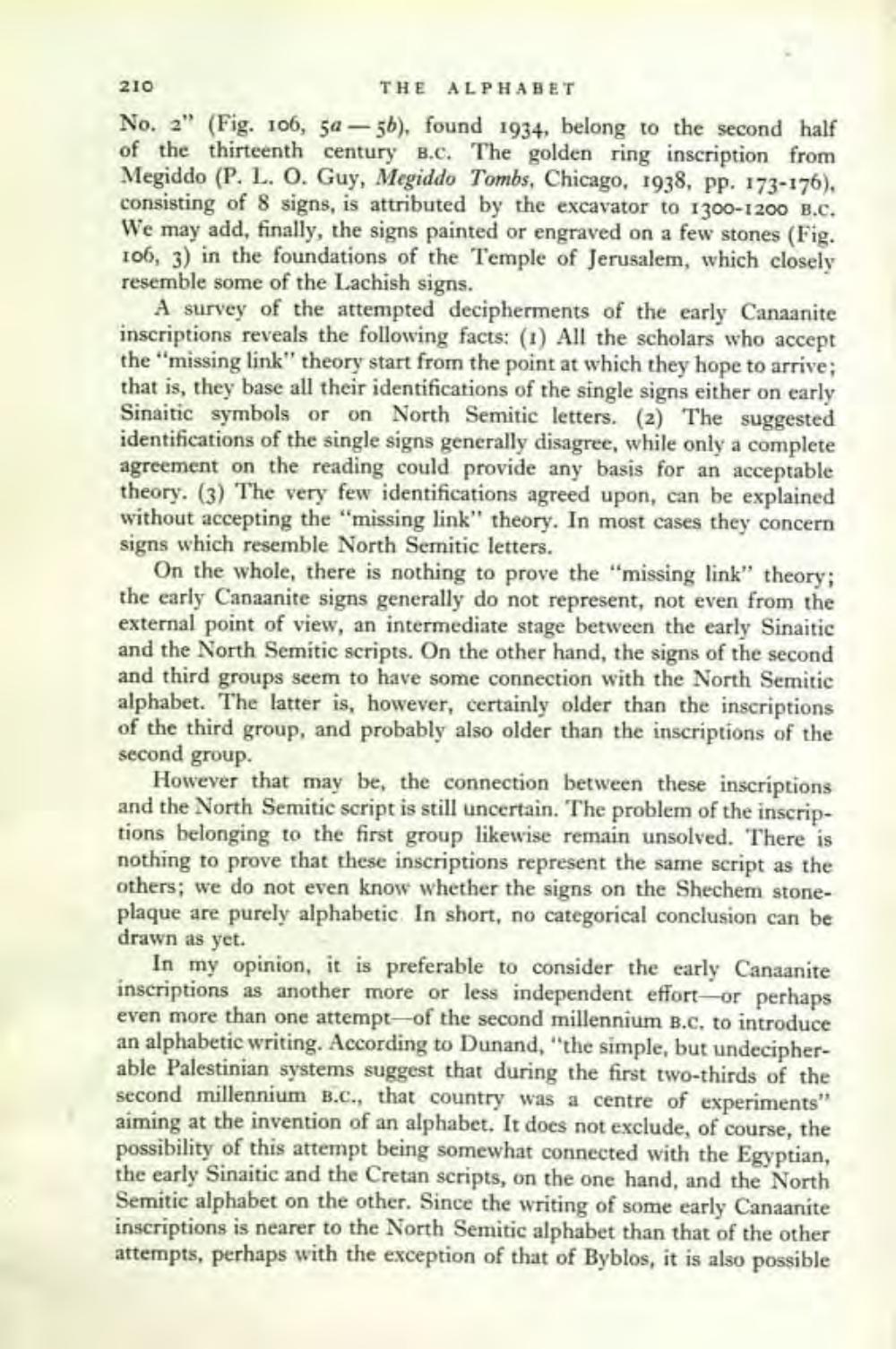________________
210
THE ALPHABET No. 2" (Fig. 106, 52 - 5b), found 1934, belong to the second half of the thirteenth century B.C. The golden ring inscription from Megiddo (P. L. O. Guy, Megiddo Tombs, Chicago, 1938, pp. 173-176), consisting of 8 signs, is attributed by the excavator to 1300-1200 B.C. We may add, finally, the signs painted or engraved on a few stones (Fig. 106, 3) in the foundations of the Temple of Jerusalem, which closely resemble some of the Lachish signs.
A survey of the attempted decipherments of the early Canaanite inscriptions reveals the following facts: (1) All the scholars who accept the "missing link" theory start from the point at which they hope to arrive; that is, they base all their identifications of the single signs either on early Sinaitic symbols or on North Semitic letters. (2) The suggested identifications of the single signs generally disagree, while only a complete agreement on the reading could provide any basis for an acceptable theory. (3) The very few identifications agreed upon, can be explained without accepting the "missing link" theory. In most cases they concern signs which resemble North Semitic letters.
On the whole, there is nothing to prove the "missing link" theory; the early Canaanite signs generally do not represent, not even from the external point of view, an intermediate stage between the early Sinaitic and the North Semitic scripts. On the other hand, the signs of the second and third groups seem to have some connection with the North Semitic alphabet. The latter is, however, certainly older than the inscriptions of the third group, and probably also older than the inscriptions of the second group.
However that may be, the connection between these inscriptions and the North Semitic script is still uncertain. The problem of the inscriptions belonging to the first group likewise remain unsolved. There is nothing to prove that these inscriptions represent the same script as the others; we do not even know whether the signs on the Shechem stoneplaque are purely alphabetic In short, no categorical conclusion can be drawn as yet.
In my opinion, it is preferable to consider the early Canaanite inscriptions as another more or less independent effort-or perhaps even more than one attempt-of the second millennium B.C, to introduce an alphabetic writing. According to Dunand, "the simple, but undecipherable Palestinian systems suggest that during the first two-thirds of the second millennium B.C., that country was a centre of experi aiming at the invention of an alphabet. It does not exclude, of course, the possibility of this attempt being somewhat connected with the Egyptian, the early Sinaitic and the Cretan scripts, on the one hand, and the North Semitic alphabet on the other. Since the writing of some early Canaanite inscriptions is nearer to the North Semitic alphabet than that of the other attempts, perhaps with the exception of that of Byblos, it is also possible




